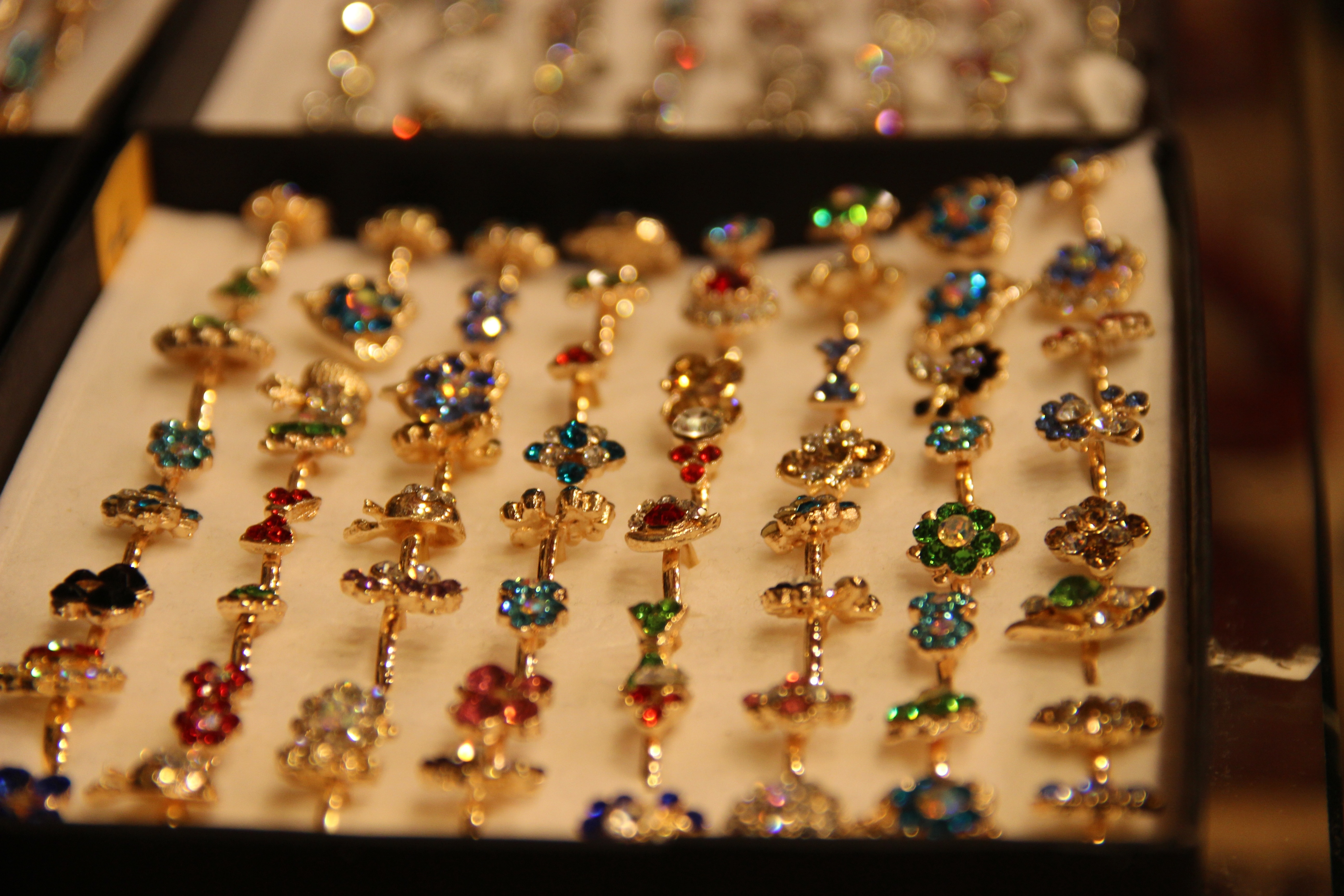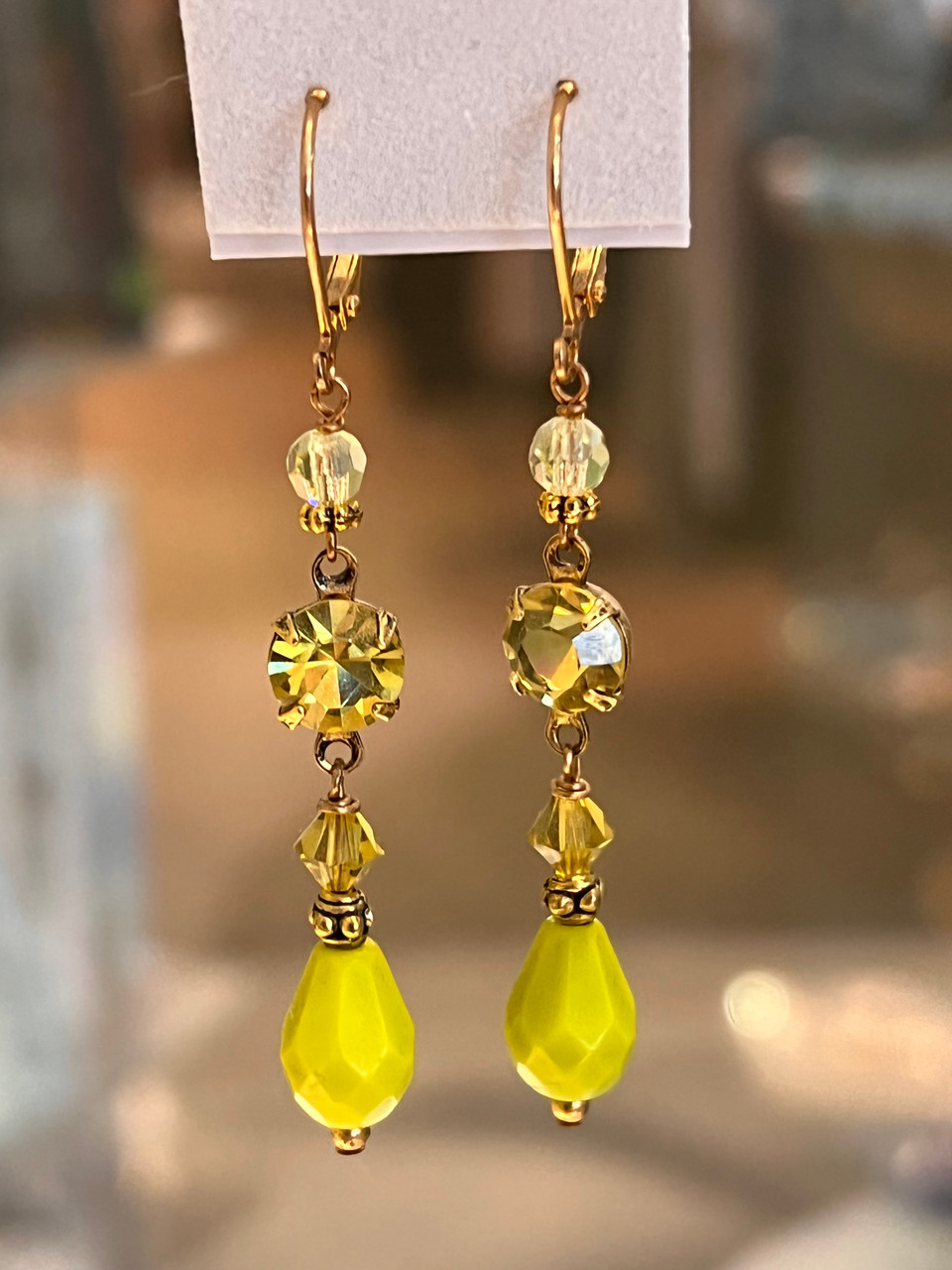Estate vs. Vintage vs. Antique Jewelry – What’s the Difference?
10th Jul 2023
Here at Backdoor Gallery, we’ve been big fans of unique jewelry
items since we opened all the way back in 2009.
While most of these pieces would be considered vintage jewelry, many of our customers are quite fond of two other popular options, too: estate and antique jewelry.
So, in this blog post, we’re going to use our experience in the fashion world to help you better understand the difference between estate, vintage, and antique jewelry.
What Is Estate Jewelry?

Let’s start with estate jewelry, which is commonly defined as any jewelry that’s not brand-new. So, if you’re not the first owner, you’re wearing estate jewelry.
But while estate sales can be a great place to find this kind of jewelry (more on that in a moment), the previous owner doesn’t have to be deceased in order for the term to apply.
Plenty of people wear “estate jewelry” simply because one of their living parents handed it down to them.
Estate Jewelry Doesn’t Have to Be a Certain Age
One other important misconception to address is that estate jewelry can be 100 years old or just 1 year old.
As long as it had a previous owner, it’s considered estate jewelry no matter how old the piece is.
That being said, when most people refer to estate jewelry, they’re usually referring to a piece that’s either antique or vintage – two categories that definitely do have classifications based on age.
What Is Antique Jewelry?

Alright, now let’s jump into antique and vintage jewelry, which are both A LOT more involved.
One of the biggest differences between estate jewelry and vintage and antique jewelry is that the historic nature of the latter two can be divided into separate epochs.
But first, let’s cover a simple definition of antique jewelry.
Simply put, antique jewelry refers to pieces that are more than a century old. Often (but definitely not always) these items are rare, precious, and/or steeped in history due to their age.
Antique jewelry is often distinguished by the specific era from which it originated. Technically, a piece could go back thousands of years.
But most jewelry experts identify 6 distinct eras for antique jewelry, so let’s go through each of these one at a time. As you’re about to see, these eras do sometimes overlap.
Georgian Era Antique Jewelry (1714 – 1837)
The Georgian Era is a period that predates the Industrial Revolution, extending over 120 years from 1714 to 1837. Surviving examples of these delicate jewelry creations are scarce, making them highly sought after. Georgian jewelry boasts a remarkable combination of nature-inspired motifs and exquisite gemstones.
This era of English history was marked by the reigns of four kings:
- King George I
- King George II
- King George III
- King George IV
While the era's long duration is impressive, it is important to note that Georgian jewelry styles progressed at a comparatively slower pace during this time.
As you can probably imagine, finding Georgian Era jewelry of any decent quality is nearly impossible these days. Your best bet is to look for such pieces in museums.
Jewelry items from the Georgian Era were primarily crafted using silver and yellow gold. Common gemstones that were used to make Georgian jewelry include:
- Diamonds
- Garnet
- Glass
- Paste
- Pearls
- Rubies
- Sapphires
- Topaz
The types of diamond cuts that were most common during this era includes:
- Antique Cushion Cuts
- Old Mine Cuts
- Point Cuts
- Rose Cuts
- Single Cuts
- Table Cuts
These types of traits are what historians look for when identifying Georgian jewelry.
Victorian Eras Antique Jewelry (1837 – 1901)
As you probably know, the Victorian Era derives its name from Queen Victoria of England, who reigned throughout the 19 th century and played a pivotal role in shaping jewelry styles of the time. This era can be divided into three distinct periods, each corresponding to different phases in Queen Victoria's life.
- The Early Victorian Romantic Era (1837-1850) witnessed the rise of intricately designed jewelry inspired by nature. Crafted delicately in silver and gold, popular pieces included lockets, brooches, colored gemstones, and diamonds.
- The Middle Victorian Grand Era (1860-1880) saw a shift towards darker and less vibrant jewelry designs.
- The Late Victorian Aesthetic Era (1885-1901) featured star and crescent motifs, along with renaissance revival lockets adorned with seed pearls, flowers, hearts, and animals.
Compared to most jewelry pieces from the Georgian Era, pieces from the Victorian Era is more abundant and relatively easier to acquire.
Gold and silver continued to dominate as the preferred metals for Victorian Era jewelry. Popular gemstones during this period included pearls, garnets, sapphires, amethysts, turquoise, and diamonds. Animal motifs, particularly snakes, were also immensely popular amongst jewelry during the Victorian era.
Edwardian Era (1901 – 1915)
Next came the Edwardian Era , which emerged during the reign of King Edward VII of England, spanning from 1901 to 1910.
This era holds significant importance in the history of jewelry and is often referred to as the La Belle Epoque Era. Notably, it marks the introduction of platinum into the realm of jewelry. Initially combined with gold, platinum quickly gained popularity and eventually became a sought-after material in its own right.
Diamonds and pearls continued to occupy a prestigious position within Edwardian jewelry, emphasizing their timeless allure.
In contrast to jewelry designs that were commonplace during the Victorian Era, engagement rings and other pieces from the Edwardian era showcased intricate detailing, ornate craftsmanship, and a penchant for floral motifs. This stylistic shift is attributed to the introduction of techniques such as delicate milgrain and openwork filigree, which flourished during the Edwardian period. These techniques added an air of elegance and grace to the jewelry of this era.
Art Nouveau Era Antique Jewelry
The Edwardian era of jewelry also saw the rise of the Art Nouveau Era (1895-1915), which is renowned for breathing new life into the very art of making jewelry, drawing inspiration primarily from nature. This era witnessed the introduction of innovative enameling techniques and the use of opals and semi-precious stones.
Art Deco Era of Antique Jewelry
Finally, the Art Deco period (1915-1935) is the final era of antique jewelry and, arguably, the most unique.
This era witnessed an evolution from delicate designs to bold, geometric patterns. Stones were meticulously cut into strict, angular shapes, capturing the essence of the era's distinctive aesthetic (perhaps best exemplified by art deco architecture ).
What Is Vintage Jewelry?
Vintage jewelry is any item that’s fewer than 100 years old.
Technically, this would mean that any new piece of jewelry you buy off Amazon or at your local mall would be “vintage.”
For this reason, when most people talk about vintage jewelry, they’re referring to pieces that are at least 50 years old.
It all started back in the Roaring 20s .
First, there was the Retro Modern Era, which lasted from 1945 to 1960, jewelry designs were heavily influenced by Hollywood, characterized by vivid colors, boldness, and flamboyance. This period saw the rise of large cocktail rings, bracelets, necklaces, pins, and charm bracelets. As platinum was unavailable to the jewelry industry during World War II, gold became the preferred metal of choice.
In addition, one can explore the realm of Jacqueline Kennedy-inspired 1960s jewelry, which encapsulated the spirit of the era. Furthermore, the 1980s witnessed the emergence of dramatic gold jewelry that has now become a part of the vintage category.
One exciting aspect of acquiring vintage jewelry is the potential for a quality piece to transition into an antique item during your ownership, reaching the significant age of 100 years or more. This adds an extra layer of allure to the world of vintage jewelry.
Where to Find Estate, Antique, and Vintage Jewelry
Now that we have clear definitions for these three jewelry terms, let’s talk about where you can find them if you’d like to add some to your collections.
Aside from the kind you may actually inherit yourself, estate sales are probably the most obvious place to start your hunt if you’re in the market for estate jewelry.
Antique shops can also be a great place to hunt for estate jewelry and, of course, antique pieces. Many people still hunt for older jewelry on eBay, too.
Speaking of shopping online, you can definitely find vintage jewelry at any of the many bohemian clothing websites out there – like ours ?– that usually have impressive inventories of original pieces.
Just to name some examples of the vintage earrings we currently carry, there are:
- Silver Crystal Earrings with Amethysts
- Salmon Pink Earrings with Pearls
- Amethyst Earrings with Glass Beads
- Crystal Leverback Earrings with Gold Accents
- Green Leverback Earrings with Gold Accents
- Purple Crystal and Pearl Earrings
And you can always contact us if you have any questions about ANY of the items in our hand-selected inventory.




